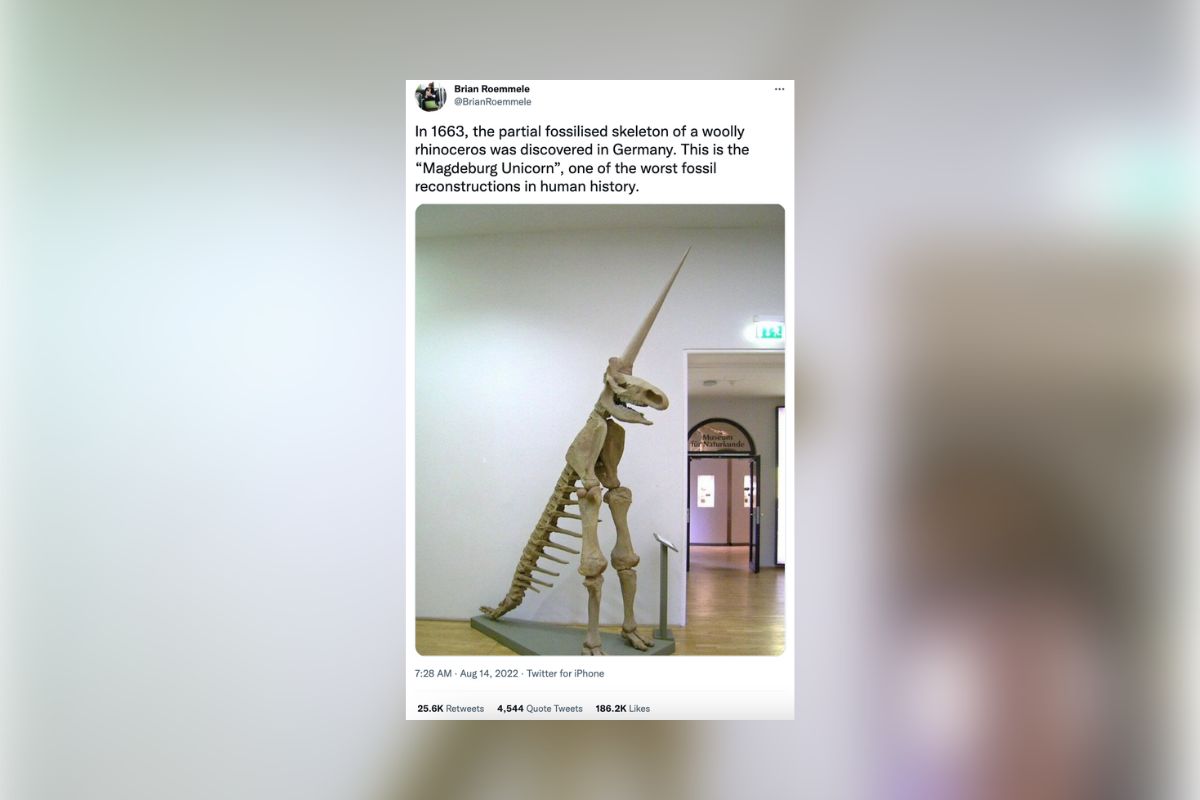The Whippet #153: Shake off the shackles of the page
On this page

Last issue I was talking about getting a gold tooth, and reader Michael Ham (who also has a gold tooth), shared this story:
I’m writing because of what my uncle Woody told my cousin Ronnie and me when we lost our first tooth: if you don’t put your tongue into the cavity where the tooth was, the tooth will grow in gold, and then you’ll have a nifty gold tooth. And he proved it by showing us a couple of gold teeth he had.
But try as we might, we could not keep from feeling the soft cavity with our tongues, so — alas! — our teeth grew in as plain old dumb teeth.
So when I finally did get a gold tooth, I was enormously proud
I love this, this is such a classic "outrageous lies told by a non-parent adult that could be debunked with about four seconds' thought if you weren't 5", especially with that "proof" of the uncle's own gold teeth.
These people perform an important role in a child's life. A friend of my mum's told me about hoop snakes (they bite the end of their tail and roll down hills like a hoop) and the ice mine in Tullamarine, where we get all our ice from. (Tullamarine is on the outskirts of Melbourne; it never drops below zero, except for maybe a handful of midwinter nights.)
And because you were told the lies when you were little and uncritical, and because they're not important facts that come up in daily life, you don't reassess them and they just live in your recall memory, unquestioned. It might not be till you're an adult and driving through Tullamarine that you think "oh, where the ice mi– wait there's no way that's true."
Please give me the outrageous and easily disprovable lies you were told as a kid! I have a niece and nephew and I don't want to drop the ball.
(You know the kind I mean, the fun shaggy dog stories and such. I can just tell someone is waggling their fingers in anticipation of typing "religion" or "the free market" in the comments box; exercise some self-restraint.)

If paleontologists found a fossilised baboon skeleton

Paleoartist CM Koseman is making the point that – especially before we knew dinosaurs have feathers – artists drew dinosaurs as the skeletons + lean muscle + skin and that's it. A dog's big floppy ears or a cat's pointy ears or a camel's humps wouldn't end up in the picture, because they don't fossilise. A big brushy tail ends up skinny and whiplike. Dinosaurs don't usually even get lips and gums, so their jaws look more stark and terrifying than modern animals with big sharp teeth.
You can understand why – they didn't know what fat deposits or skin flaps dinosaurs had, and didn't want to just make stuff up. But they ended up making something else up: the idea that dinosaurs were lean and had the same shape as their skeletons.
By refusing to speculate, by sticking purely to the data they had, they ended up with something potentially even less accurate.
Like say if Gottfried Leibniz, "a sober, cautious, interpreter" was given a mess of fossils – (he doesn't know this, but they include the skull of a woolly rhinoceros the shoulder blades and forelegs of a mammoth, and the horn of a narwhal) – he might, avoiding speculation about what could be missing and just sticking to the data he had, end up with something like the Magdeburg Unicorn:

(The full story is complicated and there are a lot of unknowns, but if you like winding stories with gaps in the chain of custody, here:


Understand a small part of the world better
I realised no one would read on if I titled it "Get a more accurate understanding of celebrity income" but I think it's legitimately interesting, and the kind of reframing that gets you closer to seeing how the world works.
Anyway: this insightful comment on a longer post about how, even among It Girls and sports stars and rich & successful actors, there's still an unfathomably huge gap between the trust fund kids and the people who need to work to live, like there is in every other field. (Sydney Sweeney is an actor, you don't need to have heard of her.)
One thing I've learned in the last year is that, when someone like Sydney Sweeney is described as making, idk, $1 million/year, that's actually pretty misleading. What would be more accurate would be to say that Sydney Sweeney owns a small business with revenue of $1 million/year.
Yes, that small business is "Sydney Sweeney, Famous Person", but it is nonetheless a business. It requires employees (agent, manager, publicist, assistant, etc.) without which the business cannot function, it has ongoing operational expenses (including personal training, hair and makeup, skincare, etc.) which are also critical to the business (especially for female celebrities). And on the other side of the ledger, its revenues, like those of any small business, are not guaranteed, but are subject to the twists of fate and the whims of the marketplace.
And yes, of course owning a small business with $1 million/year in revenue is great! It means you're very lucky, and have much more security than most people ever will, and that should be acknowledged. But it's not at all the same thing as having a salary of $1 million/year, and it is misleading to portray it otherwise. (SuddenlyAmy)

Bill Lear (founder of LearJet) named his daughter Shanda.
As in, chandelier. It was on wikipedia with a [citation needed] so I was sure it was fake but no, here she is giving a ...combination of motivational speaking + singing a medley WW2 aviation songs? Look the point is, citation found. No one would fake such a web 1.o site, surely.

Book Sculptures // Hypertexts


Artist Stephen Doyle makes sculptures out of books, but not just treating the book as a source of paper to cut – the sentences on the 'scaffolding' bits are strips of sentences cut and re-organised.
I conjured sculptures in which the lines of text shook off the shackles of the page, leapt up, out of the book, and started conferring with their neighboring lines of text, creating an aerial network of language … I soon realized that these three-dimensional diagrams seemed to have a poetic power of their own, recontextualizing language and ideas into sculptural forms, inspired by the books themselves.
More of Doyle's pieces at Colossal and you can follow him on instagram.

Happiness and unhappiness are two separate scales
Uri Bram (more famously of The Browser, but this blog he co-writes is great, I don't know why he's so coy about its existence) makes the extremely good point that we think of happiness as a single sliding scale, when it's much more accurate and useful to think of it as two.
If someone (including yourself) is struggling with low well-being, it's important to ascertain which of two problems are happening:
– not enough happiness
– too much unhappiness
If someone has a lot of unhappiness, they need to get rid of some negative influence in their life. If they don't have enough happiness, they need to add something positive to their life.
The full post goes on to talk about the implications of that idea, and it's both brief and clear, so there's not much benefit to me trying to summarise it:

This also fits with what I know of depression. When I've been depressed in the past, I didn't feel sad, hopeless or worthless, the way some people describe, I just didn't enjoy anything or care about anything. (I now know the term for that is "anhedonia".)
SSRI antidepressants tend to work much better on reducing unhappiness than increasing happiness – anhedonic depression is relatively treatment-resistant, although ketamine looks promising. Two different scales.
(Mine got better through a combination of time and tangible improvements to my life situation. My periods of depression were not very severe, so that's, you know, relevant, but I think you can underestimate the effects of your environment on your brain chemicals. People always say "you can't run away from your problems" but that's garbage – unsuitable jobs, friends, partners and towns can all be run away from, and then a while later you realise you've been feeling kinda positive lately. Run away from a problem today.)
I realise what I'm describing above is "removing unhappiness", and I said what I mainly had was a lack of happiness, but when you take something energy-sucking out of your life, if creates space for better things, and when you leave a depressing town you don't go to a neutral void, you go to a town with some happiness-causing things there.
(Further note: when you're in the midst of depression, it feels like your external environment isn't relevant, and so you're probably more likely to make bad choices about it. Afterall, if you're never happy anyway, what's the point in ending the relationship that doesn't make you happy? It's a lot of work and drama, and you'll still be unhappy afterwards, because you're always unhappy, so why bother? Strong logic! But not correct.
On the other hand, sometimes people leave good relationships because they're not happy for random brain reasons, and they attribute it to the relationship. Probably best to ask a perceptive friend what they reckon rather than follow the blanket instructions of a newsletter writer.)

Comments
Sign in or become a Whippet subscriber (free or paid) to add your thoughts.
Just enter your email below to get a log in link.
A newsletter for the terminally curious
Arrives in your inbox every second Thursday.


